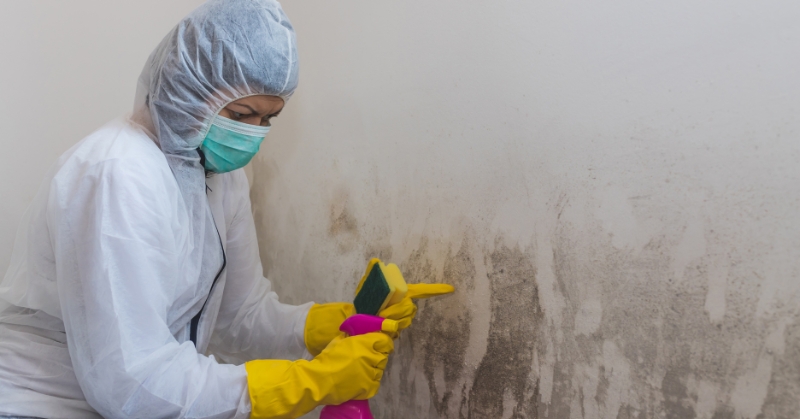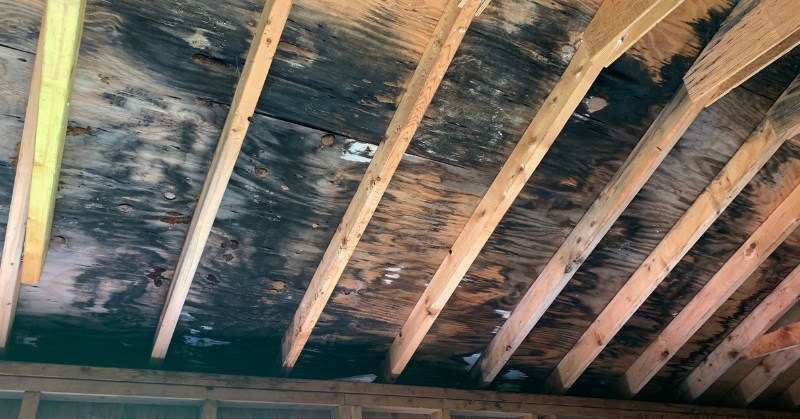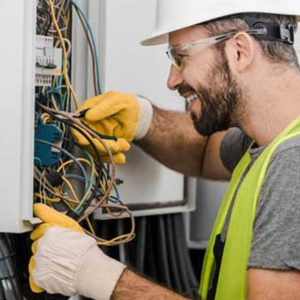Mold is more than just an eyesore; it’s a health hazard that can lead to respiratory issues, allergic reactions, and other health complications. Understanding mold remediation and how to safely remove mold from your home is essential for every homeowner. Mold can form in various areas of a house, especially in damp spaces like basements, bathrooms, and kitchens. Addressing the issue early on can prevent damage and health risks. This guide will provide essential information on mold remediation to ensure a clean, safe environment in your home.
Understanding Mold Growth and Health Risks
Mold is a type of fungus that thrives in humid and moist environments, making it a common issue in areas with high humidity levels or water damage. Mold reproduces through tiny spores that travel through the air and settle on damp surfaces. When left untreated, mold colonies can grow and spread, affecting both the structural integrity of a building and the health of its occupants.
Mold exposure can lead to health risks, including respiratory problems, skin irritation, and allergic reactions. People with compromised immune systems, asthma, or allergies are particularly vulnerable to mold exposure. Recognizing the risks associated with mold underscores the importance of professional mold remediation services for thorough and safe removal.
Identifying Mold in Your Home
To remove mold safely, it’s crucial first to identify its presence and locate all affected areas. Mold often appears as black, green, or white spots on walls, ceilings, and other surfaces. It may also emit a distinct musty odor, especially in enclosed areas. Common areas where mold is likely to develop include:
- Bathrooms: Due to high humidity levels, mold is commonly found in tile grout, on shower curtains, and in corners.
- Basements and crawl spaces: Moisture from the ground and poor ventilation can lead to mold growth.
- Kitchens: Areas around the sink, refrigerator, and under cabinets are susceptible to mold growth due to constant exposure to water.
- Attics: Poor ventilation and roof leaks can create an environment conducive to mold growth in attics.
If you spot mold or notice a musty odor, it’s essential to address it promptly before it spreads further.
Steps for Safe Mold Remediation
Successfully removing mold requires careful planning and adherence to safety procedures. Although some homeowners may attempt DIY mold removal, professional mold remediation is often necessary for extensive mold issues to ensure thorough removal and prevent reoccurrence.
1. Ensure Safety Precautions
Mold remediation involves handling potentially harmful mold spores, so safety precautions are critical. When working with mold, it’s essential to use the following protective gear:
- Respirator mask: To prevent inhaling mold spores, wear an N95 respirator mask.
- Gloves: Use gloves, preferably made of rubber, to avoid direct skin contact with mold.
- Goggles: Protect your eyes from mold spores and cleaning chemicals.
Always ventilate the area well by opening windows and using fans to circulate air, but avoid spreading spores to other parts of the house.
2. Contain the Mold-Affected Area
To prevent mold spores from spreading during the remediation process, isolate the contaminated area. Seal doors and vents with plastic sheeting, and turn off HVAC systems in the affected rooms. This containment minimizes the risk of cross-contamination to other areas.
3. Address the Source of Moisture
Mold remediation won’t be effective if the source of moisture is not addressed. Common moisture sources include leaky pipes, roof leaks, and condensation. Fixing the root cause of moisture is essential to prevent future mold growth. Without resolving the underlying issue, mold may quickly return, undoing your remediation efforts.
4. Clean and Disinfect Mold-Affected Surfaces
After containing the area and addressing the moisture source, clean all visible mold with appropriate cleaning agents. The choice of cleaning solution depends on the material and extent of mold growth:
- Bleach solutions: A mix of 1 cup bleach to 1 gallon of water can effectively kill mold on non-porous surfaces like tiles, bathtubs, and countertops.
- Vinegar: For a less toxic option, vinegar can be used on many surfaces to kill mold effectively.
- Mold-specific cleaners: Commercial mold cleaners are designed for deep penetration and may be used on various surfaces.
When cleaning, scrub the affected area thoroughly to remove all visible mold. Avoid mixing cleaning solutions, as some combinations can create toxic fumes. Remember that certain porous materials like carpet, drywall, and insulation may require replacement instead of cleaning if mold growth is extensive.
5. Dry the Area Thoroughly
After cleaning, thoroughly dry the area to prevent future mold growth. Use fans, dehumidifiers, or natural ventilation to speed up the drying process. Mold can quickly regrow in damp areas, so ensuring complete dryness is vital.
6. Dispose of Contaminated Materials
Dispose of any contaminated materials, including cleaning supplies, protective gear, and materials like drywall or carpet that have been removed. Place these items in sealed bags to prevent mold spores from escaping and spreading. Proper disposal reduces the risk of cross-contamination.

Preventing Future Mold Growth
Mold remediation is only a temporary solution if steps aren’t taken to prevent future growth. Regular maintenance and a few preventative measures can make a significant difference in keeping mold at bay:
- Control humidity: Keep indoor humidity levels below 60%, ideally between 30-50%. Use dehumidifiers in high-humidity areas such as basements and bathrooms.
- Ventilation: Ensure proper ventilation in moisture-prone areas, including bathrooms, kitchens, and laundry rooms. Installing exhaust fans helps reduce moisture buildup.
- Fix leaks promptly: Address any plumbing or roof leaks immediately to prevent water from seeping into walls, floors, or ceilings.
- Use mold-resistant materials: In moisture-prone areas, consider using mold-resistant paint, drywall, and insulation for added protection.
When to Call a Professional
While some mold cases can be managed independently, there are situations where professional intervention is necessary:
- Large infestations: If mold covers an area larger than 10 square feet, professional remediation is recommended.
- Hidden mold: Mold can grow behind walls, under floors, and in HVAC systems, making it difficult to detect and treat without professional help.
- Health concerns: Individuals with asthma, allergies, or compromised immune systems should avoid direct mold exposure and rely on professionals for safe remediation.
The professionals at The Water Damage Pros in Tampa FL have the expertise, tools, and training to address even the most challenging mold issues. Their mold remediation process involves thorough inspection, containment, cleaning, and post-remediation assessments to ensure complete removal.
Why Choose Professional Mold Remediation?
Choosing a trusted professional team for mold remediation brings peace of mind and ensures safety. A professional service offers:
- Comprehensive Inspection: Professionals have the experience to identify all areas affected by mold, even those hidden from view.
- Advanced Equipment: Using specialized tools like moisture meters, infrared cameras, and HEPA filtration, professionals can effectively contain and remove mold.
- Safe Handling: Certified professionals know the best practices for handling hazardous materials and can ensure the safe disposal of contaminated materials.
- Post-Remediation Testing: Reputable companies offer post-remediation testing to confirm that mold levels are safe and that the root cause of moisture has been addressed.
The Water Damage Pros in Tampa: Your Partner for Mold Damage Repair
The Water Damage Pros of Tampa are committed to providing compassionate, efficient, and effective mold remediation services. As an IICRC-certified company, they have extensive knowledge and experience to manage any mold situation. Their dedication to honesty, transparency, and quality ensures that clients receive reliable mold remediation services with long-term solutions. The Water Damage Pros go above and beyond by offering honest assessments, timely service, and personalized care, making them the trusted choice for mold damage repair in Tampa, FL.
Final Thoughts
Mold can have serious implications for your health and property if not handled correctly. Understanding the basics of mold remediation is essential, but knowing when to call a professional is equally crucial. With proper identification, containment, cleaning, and prevention strategies, homeowners can maintain a safe and mold-free environment. Whether dealing with minor mold issues or larger infestations, homeowners can count on professional services like those offered by The Water Damage Pros in Tampa to restore safety and comfort to their living spaces.





Be First to Comment